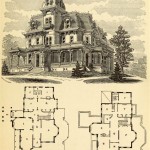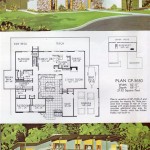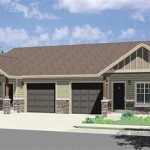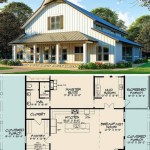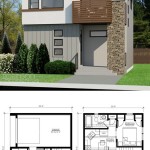```html
Neoclassical Mansion Floor Plans: A Study in Harmony and Symmetry
Neoclassical architecture, a style harkening back to the grandeur of ancient Greece and Rome, experienced a revival in the 18th and 19th centuries. Its influence is particularly evident in mansion design, where the hallmarks of balance, symmetry, and proportion dictate the floor plans. Understanding the key elements of these plans offers insights into the aesthetic and functional considerations that shaped these impressive residences.
Neoclassical mansion floor plans are characterized by a deliberate organization of space, prioritizing formal living, entertaining, and often, distinct areas for family and staff. The arrangement of rooms, the flow of circulation, and the placement of architectural features are all carefully considered to create a sense of order and refinement. The overall effect is one of sophisticated elegance and timeless appeal.
Key Point 1: The Importance of Symmetry and Balance
Symmetry is arguably the most defining characteristic of Neoclassical mansion floor plans. This principle dictates that each side of the house mirrors the other, creating a sense of visual harmony and stability. The central axis of the house is typically the main entrance, from which the rest of the plan radiates outwards. Rooms are arranged in pairs, flanking a central hallway or reception area. This symmetrical arrangement extends to the exterior facade, with windows, doors, and architectural details carefully placed to maintain the balance.
The application of symmetry isn't merely aesthetic; it also contributes to the functional efficiency of the house. The mirroring of spaces allows for a logical flow of traffic and a clear differentiation between various zones. For example, formal living rooms might be placed on one side of the central axis, while dining areas and service spaces occupy the other. The balanced distribution of space ensures that each area receives adequate light and ventilation, and that the overall layout feels cohesive and well-proportioned.
Within the symmetrical framework, balance is maintained through the strategic placement of architectural features and decorative elements. Fireplaces, commonly found in Neoclassical mansions, are often positioned symmetrically on either side of a central room or hallway. Similarly, staircases, windows, and doors are arranged to create a sense of visual equilibrium. This meticulous attention to detail contributes to the overall impression of order and refinement that defines Neoclassical architecture.
Key Point 2: Formal Living Spaces and Defined Circulation
Neoclassical mansion floor plans prioritize formal living and entertaining spaces. The layout typically includes grand reception halls, drawing rooms, dining rooms, and libraries, all designed to impress and accommodate large gatherings. These spaces are often located on the main floor, easily accessible from the entrance, allowing for seamless transitions between different activities.
The circulation within a Neoclassical mansion is carefully planned to facilitate both formal and informal movement. A central hallway, often the spine of the house, connects the main rooms and provides a clear path for guests and residents. Secondary hallways and corridors lead to more private areas, such as bedrooms, bathrooms, and service quarters. This separation of circulation routes helps to maintain the privacy of the residents while ensuring efficient access to all areas of the house.
Formal spaces are often characterized by their size, height, and elaborate ornamentation. High ceilings, large windows, and intricate moldings create a sense of grandeur and spaciousness. The use of classical architectural elements, such as columns, pilasters, and pediments, further enhances the formal atmosphere. These spaces are designed to be visually impressive and conducive to social interaction, reflecting the importance of entertaining in Neoclassical society.
In contrast to the formal areas, more private spaces, such as bedrooms and studies, are often smaller and simpler in design. These areas are intended for relaxation and contemplation, and are typically located on upper floors or in more secluded wings of the house. The transition between formal and informal spaces is carefully managed to create a sense of privacy and comfort.
Key Point 3: Hierarchy of Spaces and Service Areas
Neoclassical mansion floor plans reflect a clear hierarchy of spaces, with distinct areas designated for different functions and social classes. The main floor is typically reserved for formal living and entertaining, while upper floors are dedicated to bedrooms and private family areas. Service areas, such as kitchens, pantries, and staff quarters, are often relegated to the rear of the house or to a separate wing, maintaining a physical separation between the family and their servants.
The size and location of the kitchen are indicative of the importance placed on food preparation and service in Neoclassical households. Kitchens were typically large and well-equipped, staffed by a team of cooks and assistants. They were often located near the dining room, allowing for efficient delivery of meals, but also discreetly positioned to minimize noise and odors in the formal living areas.
Staff quarters, including bedrooms, bathrooms, and living areas for servants, were often located in the basement or attic, or in a separate wing of the house. These areas were typically smaller and less luxurious than the main living spaces, reflecting the social hierarchy of the time. The separation of staff quarters from the main house allowed for greater privacy for the family and ensured that the servants could perform their duties without disrupting the daily lives of the residents.
The hierarchical organization of space in Neoclassical mansions reflects the social and economic realities of the era. The clear differentiation between formal and informal areas, family and staff, reflects the importance of maintaining social order and upholding the conventions of aristocratic society. The floor plans of these mansions provide a fascinating glimpse into the lives and values of the people who inhabited them.
The layout of a Neoclassical mansion is not just a functional arrangement of rooms; it is a carefully crafted expression of social status, cultural values, and aesthetic ideals. The emphasis on symmetry, balance, and proportion, the prioritization of formal living spaces, and the hierarchical organization of space all contribute to the enduring appeal of this architectural style. Studying these floor plans provides valuable insights into the history of architecture and the evolution of domestic design.
The influence of Neoclassical principles continues to resonate in modern architecture, albeit often in adapted and reinterpreted forms. While the grand scale and formal formality of Neoclassical mansions may be less common today, the underlying principles of symmetry, proportion, and balanced design remain relevant and influential in creating aesthetically pleasing and functional spaces.
```
Luxury Home Plans For Neoclassical Cau With A Courtyard

Five Bedroom Neoclassical Planing 2 House Plans How To Plan Dream

Wayside Manor American Neoclassicism Courtyard House Plans Floor Plan Layout Garage

Luxury Home Plans For Neoclassical Cau With A Courtyard

Mansion Floor Plans Plan Architectural

Design For A House Of Five Bays Alternative Principal Floor Plan Basement And Bedroom Plans Entrance Elevation Riba Pix

English House Historic Plans Classical Home

Dream Neoclassical House Plans Floor Designs

Neoclassic House Plans Sater Design Collection

Neoclassical Style House Floor Plans Designs
Related Posts

